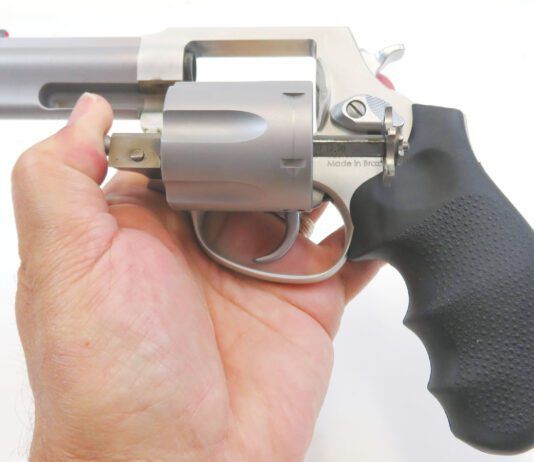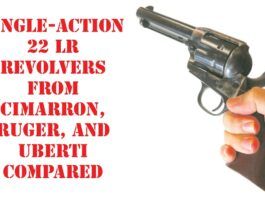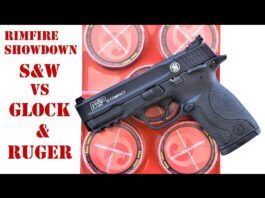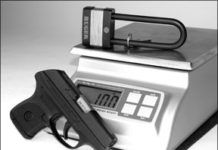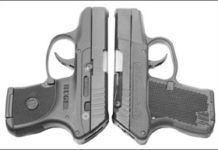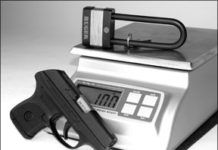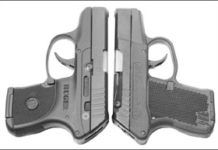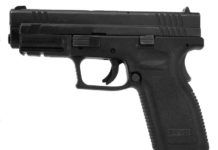380 ACP Pistols: Rugers New LCP Wins Against PPK, Taurus
Special Report – Two Tiny 380S: LCP VS. Kel-Tec
380 ACP Pistols: Rugers New LCP Wins Against PPK, Taurus
Special Report – Two Tiny 380S: LCP VS. Kel-Tec
Smith & Wesson 686 Plus .357 Magnum 164194
Our session with the seven shot Smith & Wesson 686 Plus was uneventful. We loaded it, we fired it. Whatever adjustment to the sights was necessary was completed quickly and easily with a single screwdriver.
The single-action trigger was heavier than the Alfa's. But before we knew it the shot was gone. The double-action trigger was better than the action we found on the Smith & Wesson 619 in our last test. The gun was very well balanced, and despite the exposed backstrap of the rubber Hogue Monogrip the level of comfort and control was all we could ask for.
Kimber Aegis II 9mm
In Greek mythology the aegis was the shield of Zeus. In Kimber's parlance, the Aegis II is much more offense-minded.
It's a small alloy-framed 1911 chambered for 9mm and fed from a single-column magazine. The Kimber Aegis II differs primarily from the Springfield Armory EMP by being built on a frame with grip and magazine well of standard 1911 dimensions. The 8-round MetalForm 9mm magazine shared the same outer dimensions as a typical .45 ACP magazine.
Sig Sauer Releases Compact P250 in 40 S&W, 45 ACP
Springfield Armory XD9 Service XD9101HCSP06
In European countries, it is not unusual for police to work with a dog on a leash. That is one reason why many Euro-pistols favor single-hand operation.
The XD9 is a simple pistol. It has a polymer frame with an accessory rail in front of the trigger guard and button magazine release available from both sides of the pistol. There was no active mechanical safety that switches the gun off or on, but there was a lever located in the center of the backstrap that must be compressed for the gun to fire.
There is also a lever inside the face of the trigger that must be compressed to clear the striker. The slide was topped with three-dot sights dovetailed into place front and rear. Cocking serrations adorn the slide fore and aft. Field-stripping begins with removing the magazine and locking the back the slide. This all but guarantees the chamber is empty. A latch on the left side of the frame is rotated clockwise 90 degrees. The slide can now be released, but before the slide can be completely removed, the trigger (with the grip safety compressed) must be pulled to the rear. Under the slide we found a dual-spring plunger-style guide rod and the barrel.

























